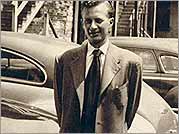Our technical services archivists have created a veritable deluge of new finding aids for some of our older collections. All of the following collections are open for research. Please contact the Special Collections Library at special-collections(at)duke.edu with any questions.
 Japanese Matchbox Label Collection, circa 1910
Japanese Matchbox Label Collection, circa 1910
400 vividly-colored Japanese matchbox labels are mounted in a contemporary paper album and housed in a custom-made cloth box. Unfortunately, the name of the person who created this marvelous collection is unknown.
Master and use copies of Jeff Storer’s oral interviews with Ann Atwater, an African-American civil rights activist based in Durham regarding her friendship with Ku Klux Klan leader C. P. Ellis.
Montrose Jonas Moses Papers, 1789-1960
The papers of this drama critic, journalist, and author of works on American and European drama and on children’s literature includes correspondence with giants of the turn-of-the-20th-century theater, including Eugene O’Neill, Percival Wilde, David Belasco, and Margaret Anglin.
 Thomas Lee Settle Papers, 1795-1949
Thomas Lee Settle Papers, 1795-1949
The papers of this Virginia surgeon, said to have pronounced the death of abolitionist John Brown, shed light on the practice of medicine in the 19th century. Of particular interest are documents detailing Settle’s own medical service for the 11th Virginia Cavalry.











